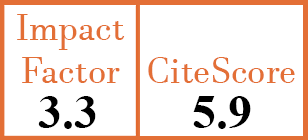Clinical aspects
Evaluation of cancer-associated myositis and scleroderma autoantibodies in breast cancer patients without rheumatic disease
A.A. Shah1, A. Rosen2, L.K. Hummers3, B.J. May4, A. Kaushiva5, R.B. Roden6, D.K. Armstrong7, F.M. Wigley8, L. Casciola-Rosen9, K. Visvanathan10
- Division of Rheumatology, Department of Medicine, Johns Hopkins University School of Medicine, Baltimore, MD, USA. ami.shah@jhmi.edu
- Division of Rheumatology, Department of Medicine, Johns Hopkins University School of Medicine, Baltimore, MD, USA.
- Division of Rheumatology, Department of Medicine, Johns Hopkins University School of Medicine, Baltimore, MD, USA.
- Department of Epidemiology, Johns Hopkins Bloomberg School of Public Health, Baltimore, MD, USA.
- Department of Epidemiology, Johns Hopkins Bloomberg School of Public Health, Baltimore, MD, USA.
- Department of Pathology, Johns Hopkins University School of Medicine, Baltimore, MD, USA.
- Division of Medical Oncology, Department of Medicine, Johns Hopkins University School of Medicine Baltimore MD, USA.
- Division of Rheumatology, Department of Medicine, Johns Hopkins University School of Medicine, Baltimore, MD, USA.
- Division of Rheumatology, Department of Medicine, Johns Hopkins University School of Medicine, Baltimore, MD, USA.
- Department of Epidemiology, Johns Hopkins Bloomberg School of Public Health, Baltimore; and Division of Medical Oncology, Department of Medicine, Johns Hopkins University School of Medicine Baltimore MD, USA. kvisvan1@jhu.edu
CER10201
2017 Vol.35, N°4 ,Suppl.106
PI 0071, PF 0074
Clinical aspects
Free to view
(click on article PDF icon to read the article)
PMID: 28628466 [PubMed]
Received: 22/12/2016
Accepted : 18/04/2017
In Press: 19/06/2017
Published: 12/10/2017
Abstract
OBJECTIVES:
Systemic sclerosis (scleroderma) and dermatomyositis are two prototypic autoimmune diseases that are strongly associated with malignancy. While specific autoantibodies in these diseases are markers of an increased risk of cancer at scleroderma and dermatomyositis onset, it is not known whether these autoantibodies are biomarkers of cancer risk in patients without rheumatic disease.
METHODS:
In a matched case-control study of women without rheumatic disease, identified from a familial breast cancer cohort, 50 breast cancer cases and 50 controls were assayed for 3 autoantibodies that are known markers of cancer-associated scleroderma and dermatomyositis: anti-RNA polymerase III, anti-NXP2, and anti-TIF1γ.
RESULTS:
No subject had moderate or strong autoantibody positivity. Eleven women were borderline positive for at least one autoantibody. The prevalence of borderline autoantibody positivity did not differ between cases and controls.
CONCLUSIONS:
Our results suggest that scleroderma and dermatomyositis autoantibodies are cancer biomarkers only in patients with clinical manifestations of specific rheumatic diseases and are unlikely to improve risk stratification for cancer in the general population. However, prospective studies are needed to examine whether scleroderma and dermatomyositis autoantibodies are markers of malignancy in other cancer types.


